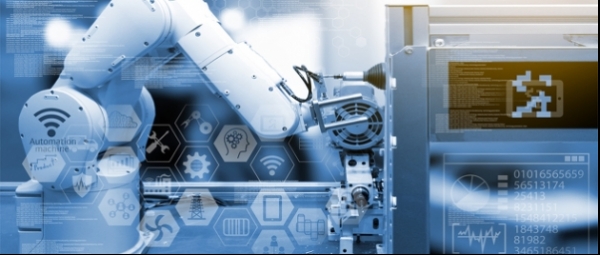AI machine learning is now being widely used with machines to analyze repetitive jobs and workplace conditions to figure out patterns for the most optimal operation and then recalibrate their operations to that effect, continuously self-learning itself to upgrade its algorithm.
A recent academic study found that the use of AI algorithm in the semiconductor fabrication line’s unmanned transportation system can save the production lead time by a factor of 10 times.
Conducted by Jang Jae Young, professor with state-funded KAIST, the study went on to suggest that it will be also able to boost up productivity by a magnitude of 4 times through OLED fabrication lines.
The study comes at a challenging time when chips makers across the world are facing difficulties in laying out its clean room floor space, as today’s clean room is increasingly becoming a hodgepodge of dozens of new, novel , complicated wafer fabrication equipment.
True enough, the clean room floor space layout plan is a key to improving productivity, because it is all about how to streamline a whole bunch of wafer inline flows from photolithography equipment to implant to CVD to etching to polishing in the most productive way.
The same is true of OHT, or overhead hoist transportation system, a robot-based automatic unmanned wafer transportation system that carries back and forth wafers from equipment to equipment to put them online.
The OHT moves on a matrix of overhead lanes built across the roof of a clean room, as they are programmed to carry wafers on what’s called FOUP, or front opening unified pod from equipment to equipment.
About 300 OHTs are moving in a single clean room.

As wafer fabrication processes are getting more complicated and more layered with incessant inputs of new raw materials and new process technologies, how to program the in-line wafer movements is very instrumental in enhancing productivity, too.
As the proof of concept of ‘mega-fab’ is coming closer to reality, promising to accommodate more than 500 OHTS, the movements planning of OHY is getting more and more important.
This helps explain why professor Jang creates the so-called ‘reinforcement learning’ AI methodology to find the most-effective and the most-productive routing route of the OHT.
Unlike normal AI methodology like machine learning or deep learning that sort out patterns on learned data sets and embark on self-studying to create its algorithm, the reinforcement learning methodology learns itself going through trial and error to concoct its algorithm as if wafer fabrication line workers learn their own knowhow with their experience.
In short, the reinforcement learning is self-reinforcing itself on production dataset as well as in-line logging dataset to pattern out the most effective route and movements of OHTs
Professor Jang has simulated the reinforcement AI learning methodology with 300 OHT in a virtual environment and found that it took just 2 days to find the most productive and relevant Al algorithm. The results was one tenth cut-down of the wafer carrying hours which it usually take with today’s OHT system. More interestingly, it was found that the reinforcement AI algorithm pay off better, when the line gets more complicated and wafer input numbers more.
Professor Jang has implemented the algorithm into virtual OLED panel production line in a joint-effort with semiconductor and LCD fab clean room HAVC solution provider Shinsung E&G to test it. The upshot was 4 times more productivity than the current system with no AI algorithm.

